Cast your vote in the Wildlife Photographer of the Year People’s Choice Award 2024
Have an impact on wildlife photography and vote for your favorite from 25 incredible shortlisted images
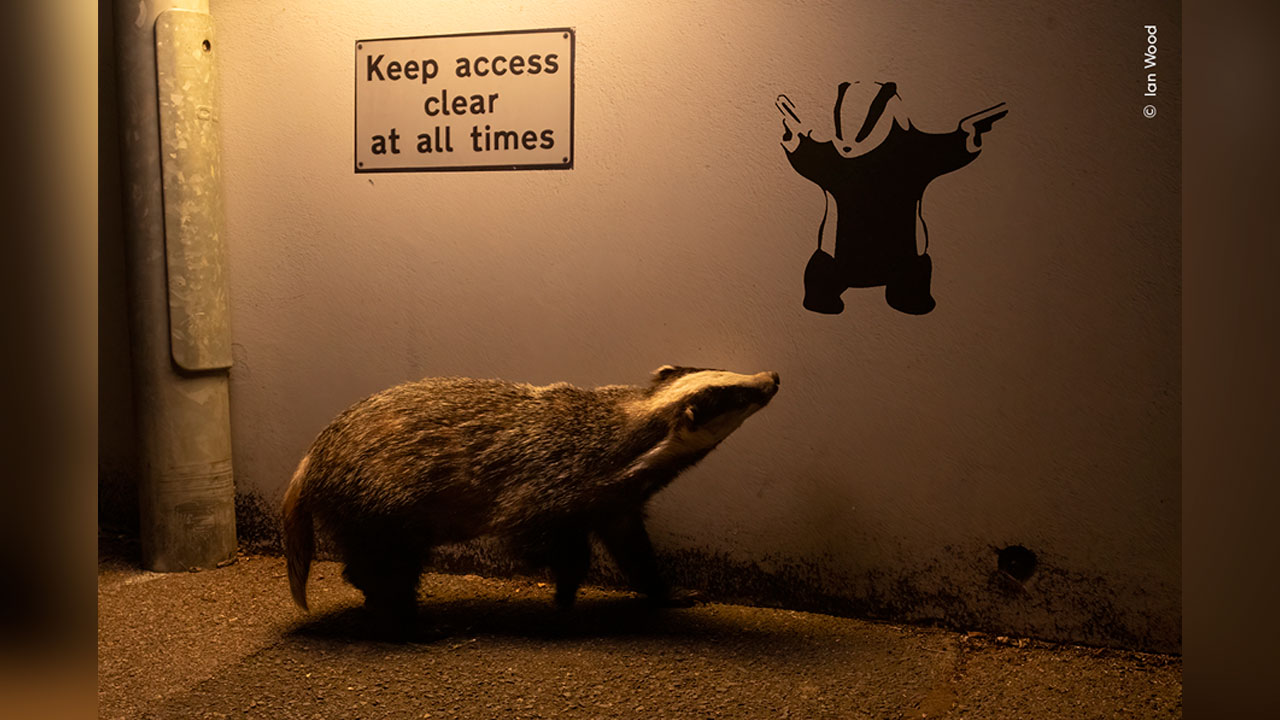
Wildlife and photography lovers around the world are invited to make a difference and vote for their favorite image to win the Wildlife Photographer of the Year 2024.
From a trafficked cheetah cub, to an exfoliating beluga whale, the 25 incredible images offer an incredible insight into the natural world, and the extreme challenges it faces today.
Wildlife Photographer of the Year is developed and produced by the Natural History Museum, London, and the shortlisted images were selected from 59,228 entries from 117 countries and territories, in addition to the 100 winning images announced earlier this year by the museum, and an international judging panel.
Now, you can have an impact on the natural world by viewing and voting for your favorite shortlisted image either online, or in person at the Wildlife Photographer of the Year exhibition at the Natural History Museum.
Wildlife Photographer of the Year was founded in 1965 by BBC Wildlife Magazine, then called Animals, and joined with the Natural History Museum in 1984 to create the competition we know today.
Dr Douglas Gurr, Director of the Natural History Museum says: “The People’s Choice Award allows members of the public from across the globe to join the jury and vote for their winning image, inspiring everyone to connect with the natural world. As always, this year's selection of images for the competition’s sixtieth anniversary is truly exceptional, and we can't wait to see which one will be chosen as the public's favourite!”
Will it be a bloodied yet determined honey badger stalking a porcupine, a rare four-toed sengi, or a Weddell seal taking a rest? Get online and vote for your favourite from today, until 29 January 2025.
Get the Digital Camera World Newsletter
The best camera deals, reviews, product advice, and unmissable photography news, direct to your inbox!
The winning image and the four runners up will be announced in February 2025 and displayed online, joining the winners of the 60th competition, and will also be showcased on the voting screens at the Natural History Museum until it closes on Sunday 29 June 2025.
Just a reminder that the 61st Wildlife Photographer of the Year is now open for entries from all ages, nationalities and experience levels until 11:30am GMT on Thursday 05 December 2024.
New for this year, entrants aged 18 to 26 may enter up to 25 images for free, and as per last year there is an entry fee waiver for photographers entering in the adult category from 107 countries across Africa, Southeast Asia, and Central and South America
Take a look at a few of my favorites below.
"A young cheetah cub hisses while waiting to be sold in Ethiopia. Captured from her home plains in the Somali Region, she was transported for several days on the back of a camel to the northern coast of Somaliland. Illegal wildlife trafficking is a problem in the Somali Region.
"Farmers catch and sell cheetah cubs to traffickers, claiming that the cheetahs attack their livestock. Some end up being killed and their parts sold, their bones shipped to Yemen and then to other Asian markets. They are then sold as tiger bones and used to make Chinese bone wine. After hissing at the camera, the cub started chirping, calling out for its mother."
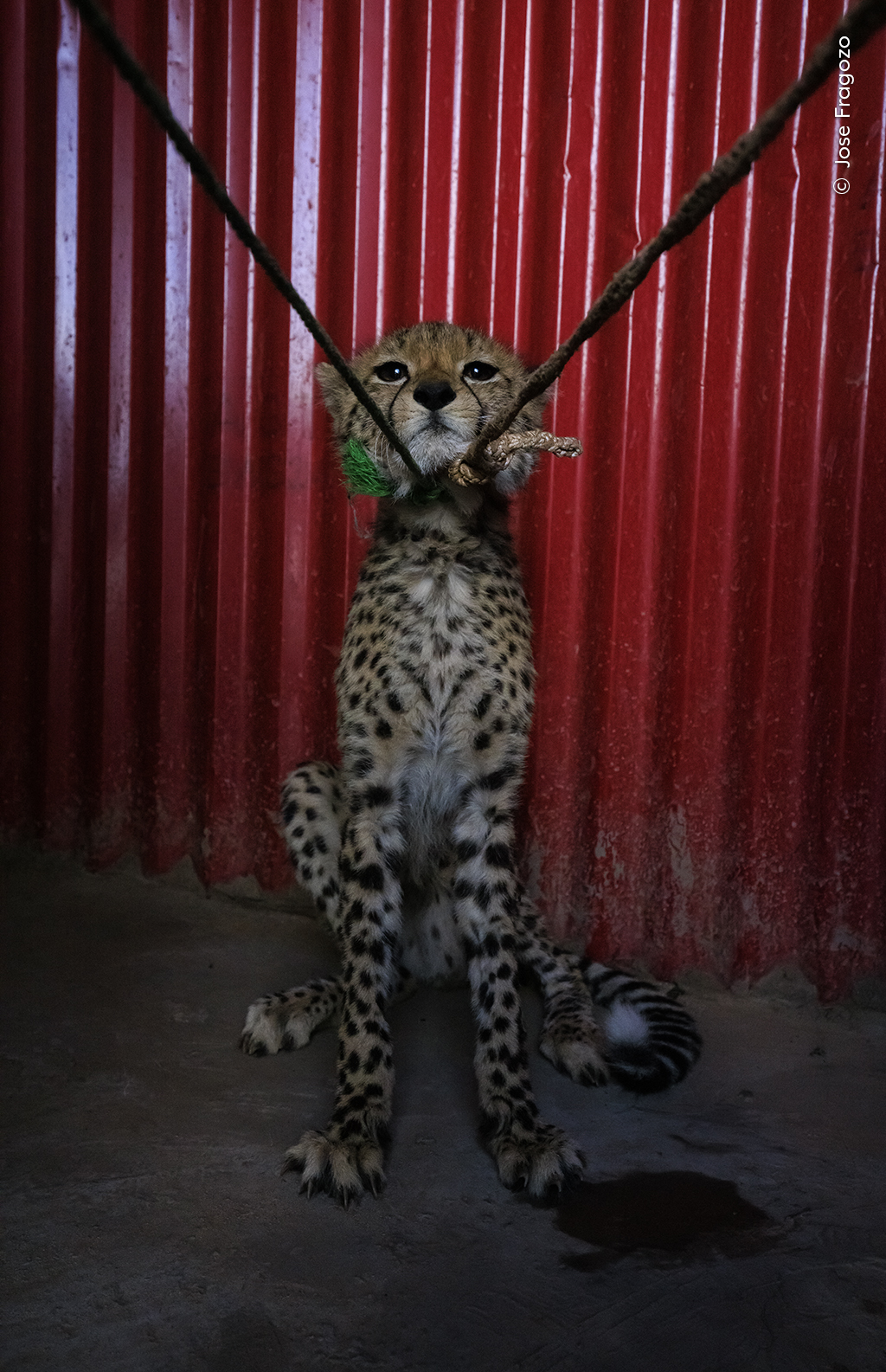
"A rarely seen four-toed sengi forages for food among the leaf litter in Mozambique. Sengis mainly eat insects and look for their prey at dusk and dawn. They rely on a combination of good vision and excellent sense of smell to find food.
"Piotr watched this sengi over several weeks in Gorongosa National Park, Mozambique. It followed the same network of trails every day, looking for beetles and other tasty morsels among the leaf litter. Sengis are extremely shy and skittish, so Piotr set up a remote camera to photograph the little creature sniffing for food."
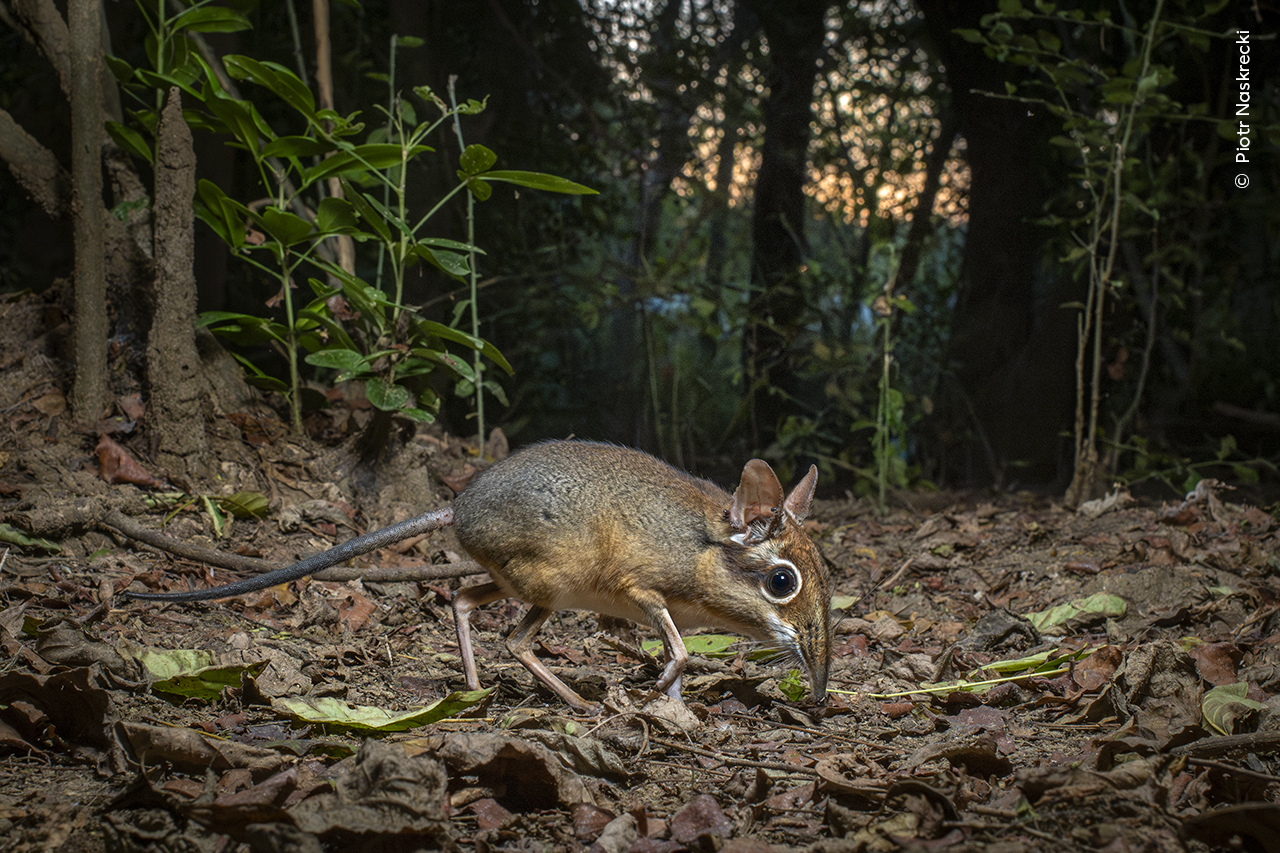
"A puma stands on a windswept outcrop in the rugged mountain terrain of Torres del Paine National Park, Chile. It is a symbol of hope. A successful conservation movement led to the creation of the national park and a rise in ecotourism in the region. This has also helped to reduce conflict between pumas and local gauchos (sheep farmers).
"The gauchos view pumas more positively because they’re attracting tourists, which is good for income. The introduction of sheepdogs has also helped. The dogs confront any approaching pumas and stop them attacking the sheep.
"In turn, the pumas hunt their natural prey, and the gauchos are less likely to shoot them. The change has been gradual but has gained momentum over the past 20 to 30 years. There is hope that humans and pumas can live alongside one another."
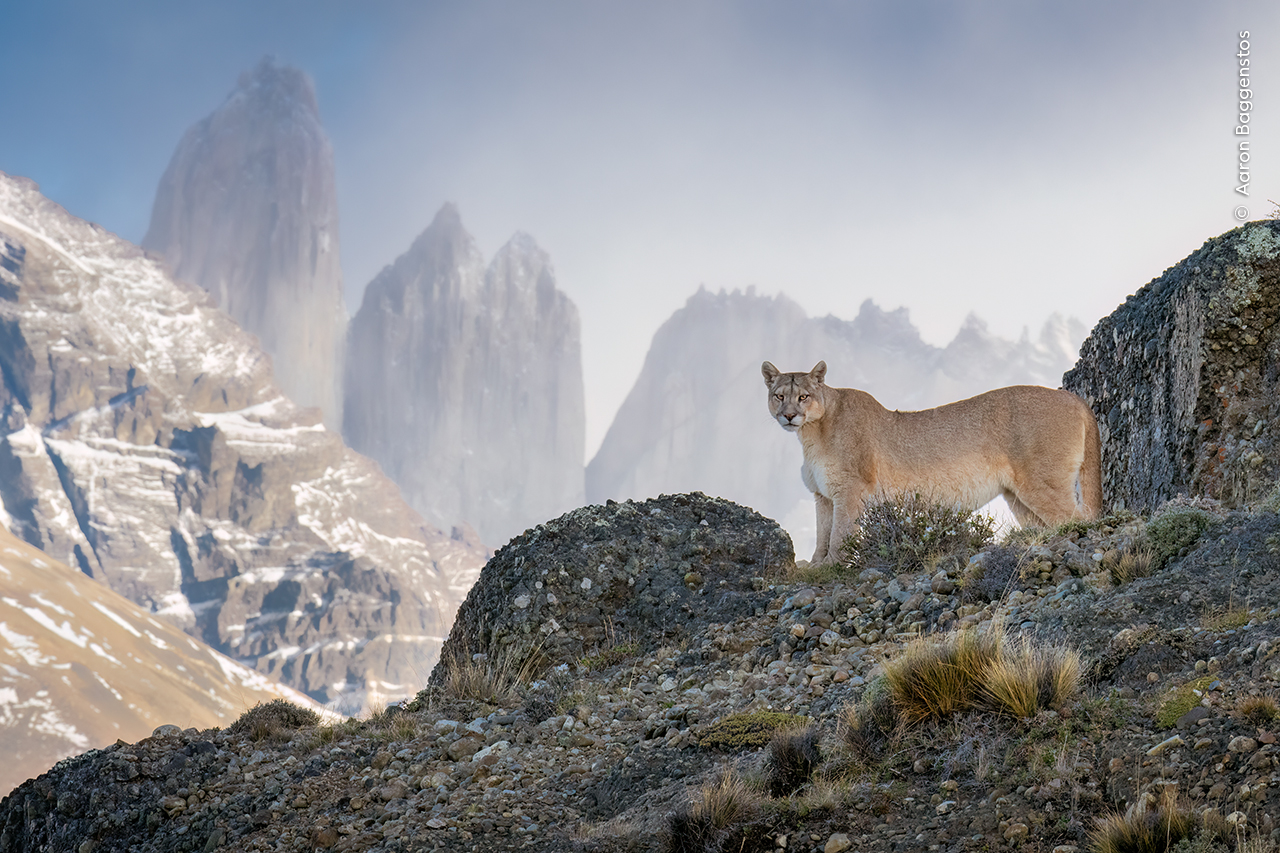
"A beaver cocks its tail before slapping it down on the water to alert its family to a newcomer. Savannah enjoys photographing North American beavers in this pond in Jackson, Wyoming, USA. As she approached the shoreline, a beaver cruised cautiously by after emerging from its lodge.
"It cocked its tail up and brought it down with a resounding crack. Savannah had been trying to document this dramatic beaver behaviour for years. Beavers use tail smacks to alert their family group to a newcomer. Despite the theatrics, beavers usually relax quickly after discovering the newcomer doesn’t pose a threat."
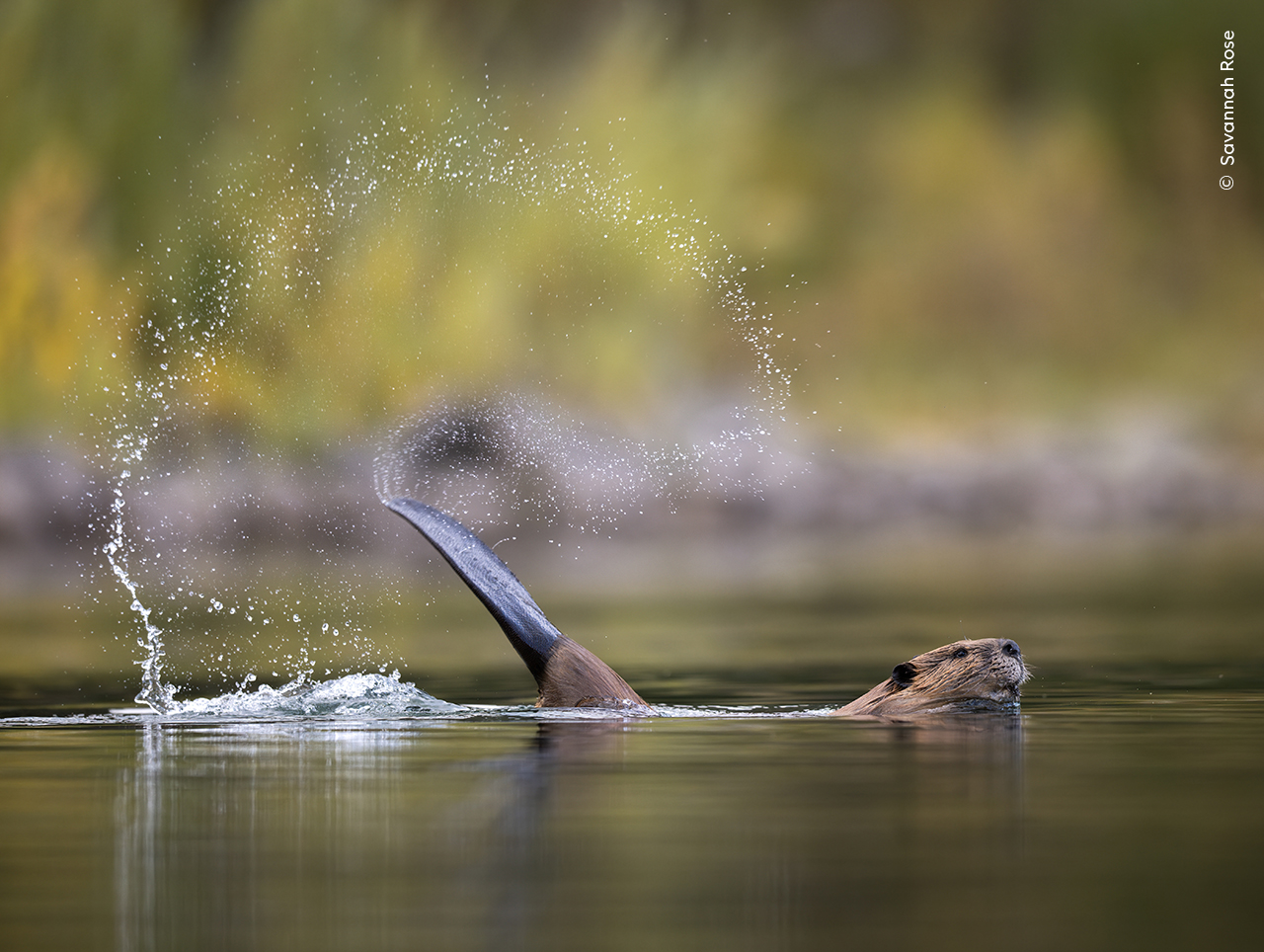
"A beluga whale rubs its underside on a shallow river bottom to exfoliate its skin. Mark took this image in a remote inlet along the Northwest Passage in the Canadian Arctic. Hundreds of beluga whales come here to socialise and exfoliate in the shallow water.
"The passage is also a safe haven, away from the predatory orcas. Belugas are extremely sociable mammals. They live, hunt and migrate together in pods that can range from quite small into the hundreds. Nicknamed ‘the canaries of the sea’, they produce a series of chirps, clicks, whistles and squeals that Mark found otherworldly."
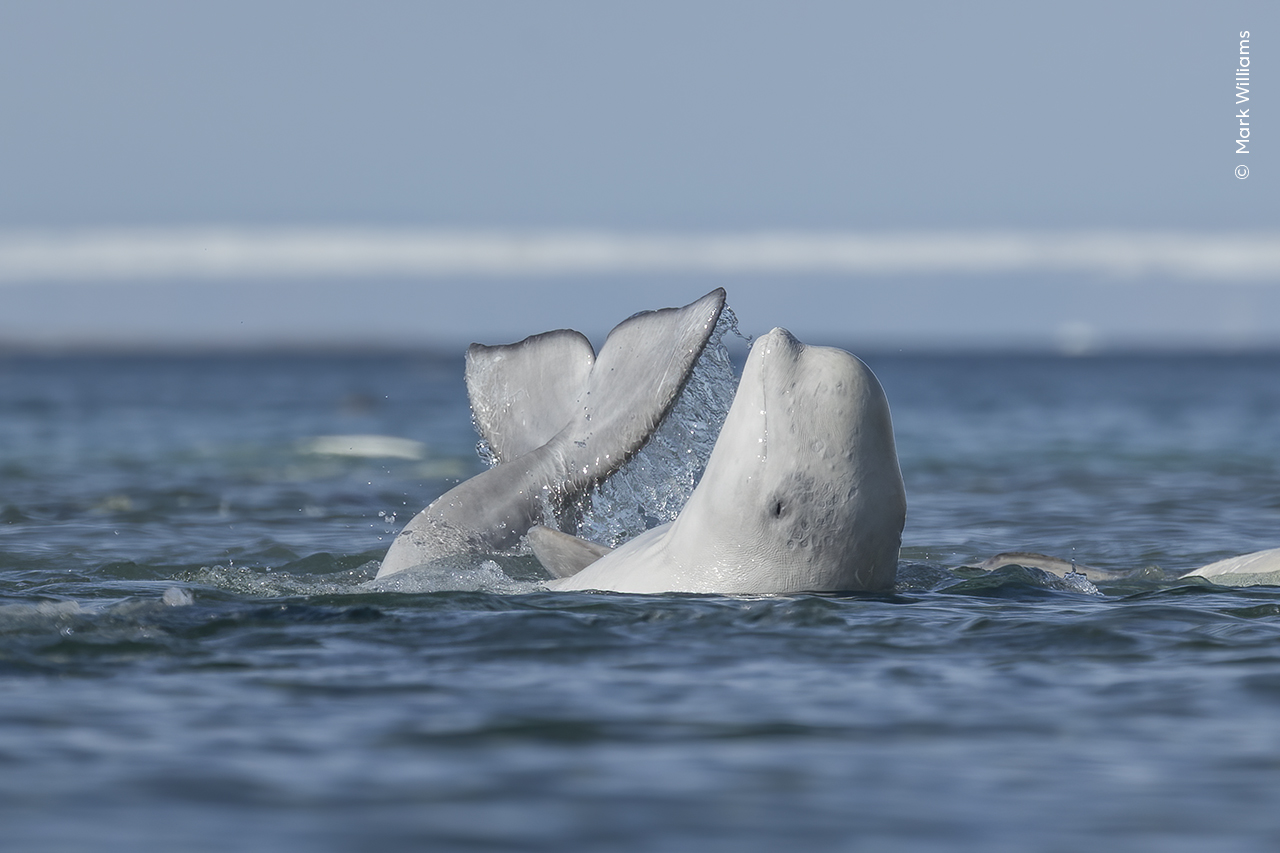
"A northern giant petrel sits on its nest at the edge of a rātā tree forest on Enderby Island, New Zealand. Northern giant petrels are large seabirds. They’re used to flying above the waves for weeks without encountering land.
"Samuel was surprised to find this one in such a woody environment. Like many other seabirds, it breeds on islands where there are fewer predators. Samuel took this image from a distance and left quickly to avoid disturbing the bird."
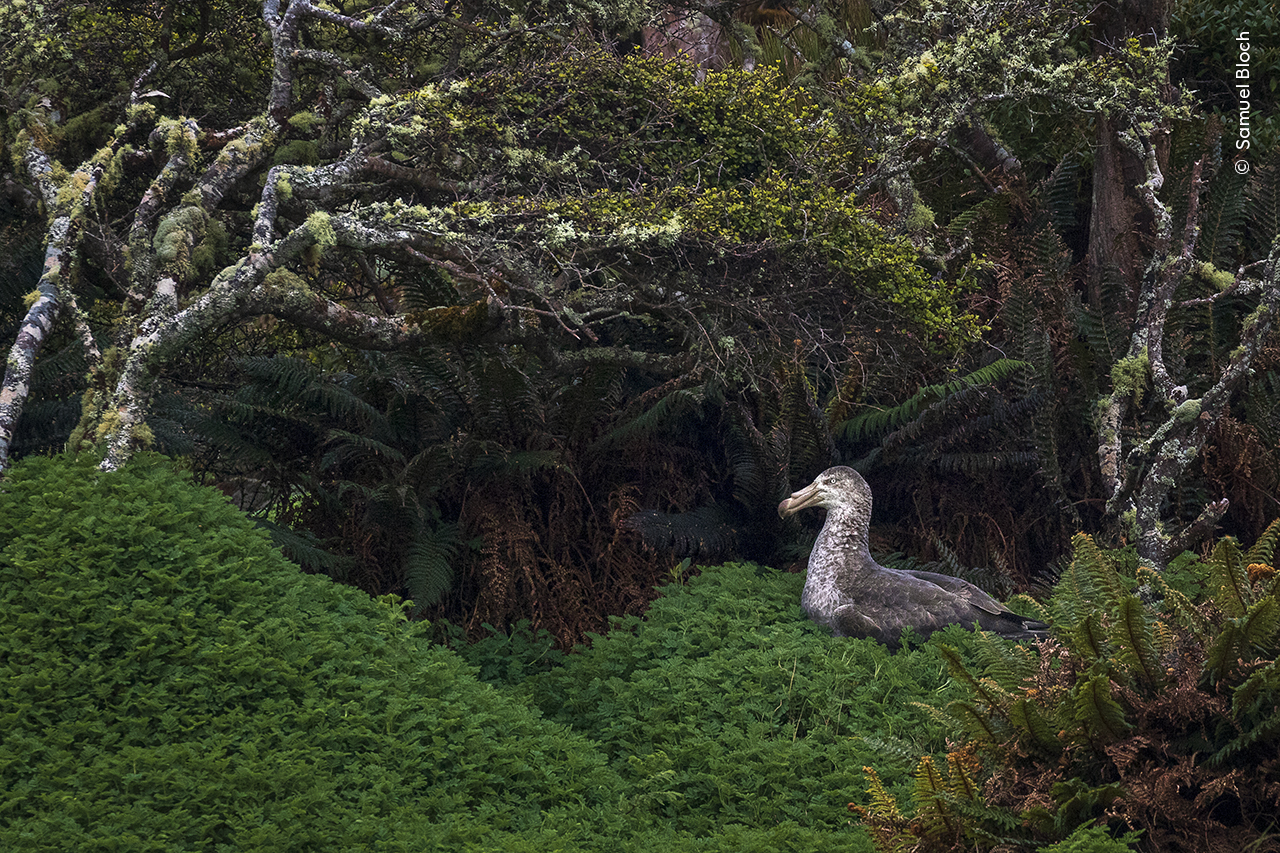
"A bloodied yet determined honey badger returns to finish off a Cape porcupine, which earlier had tried to defend itself. Found throughout Botswana, honey badgers are famously ferocious.
"They often chase animals many times their own size. This honey badger got an unpleasant surprise when it attacked the normally nocturnal Cape porcupine. The badger grabbed the porcupine’s right leg.
"In defence, the porcupine repeatedly backed into its attacker, piercing it with many quills. During a lull in the attack, the porcupine managed to shuffle away, its leg badly damaged. After a short retreat, the bloodied badger returned. It finished off the porcupine under a bush close to the original attack then dragged it into its underground den."
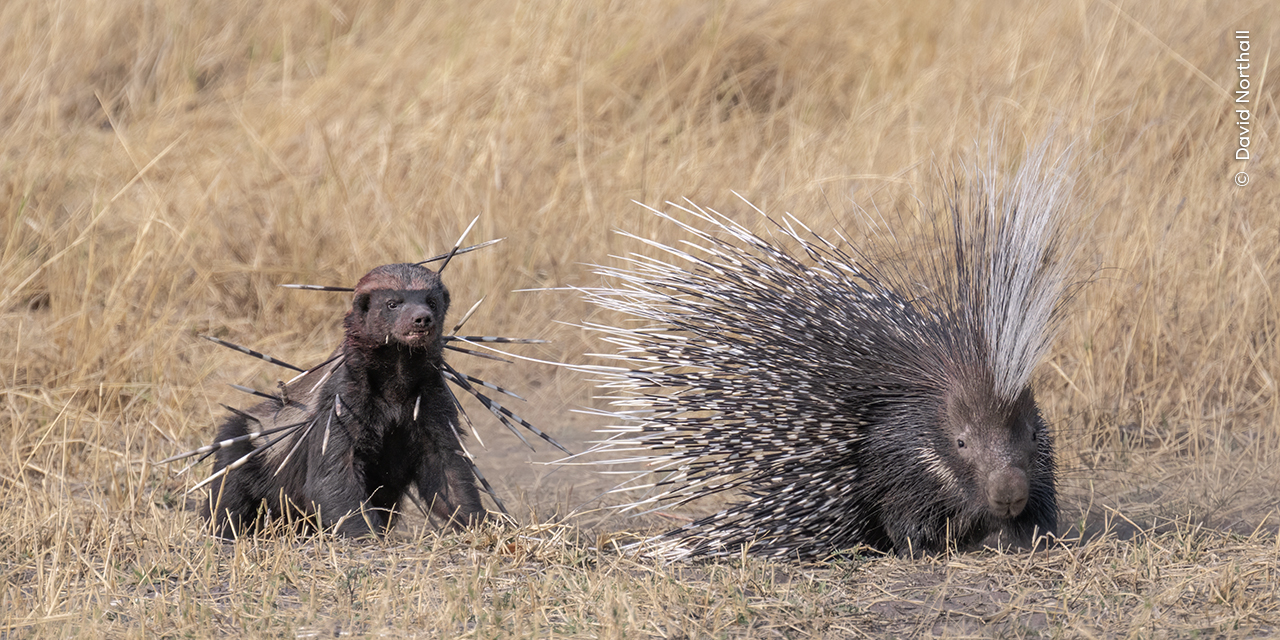
"A collage of dead butterflies and moths trapped by the surface tension of the water floats in a stream in Italy. It was a summer morning in the San Bartolomeo valley, in the Majella National Park, Italy.
"Carlo had visited this small stream many times. He expected to see the graceful flight of butterflies and dragonflies along it. He never thought he would find such a still life, a sad collage of dead insects calmly floating in the water. It hadn’t been particularly hot and there hadn’t been any storms in the previous days. To this day Carlo has no explanation of why the insects died."
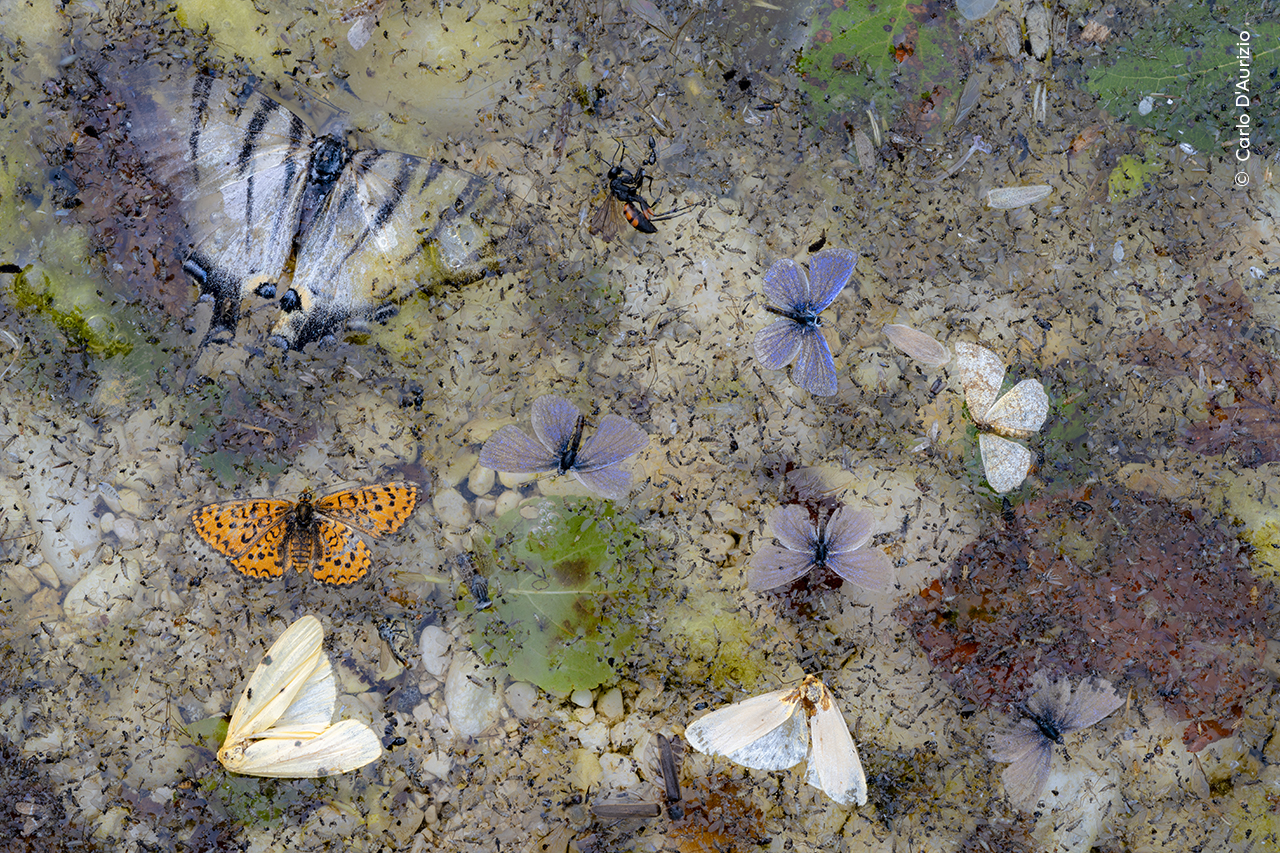
"A dramatic blue-grey sky highlights the soft greys of a Weddell seal as it rests on an ice floe. Sue watched this Weddell seal from aboard a rigid inflatable boat in Neko Harbour of the Antarctic Peninsula.
"So as not to disturb its peaceful slumber, Sue used a long lens to record this serene portrait. Weddell seals’ large bodies are covered in a thick layer of blubber. This keeps them warm above and below the icy waters of the Southern Ocean."
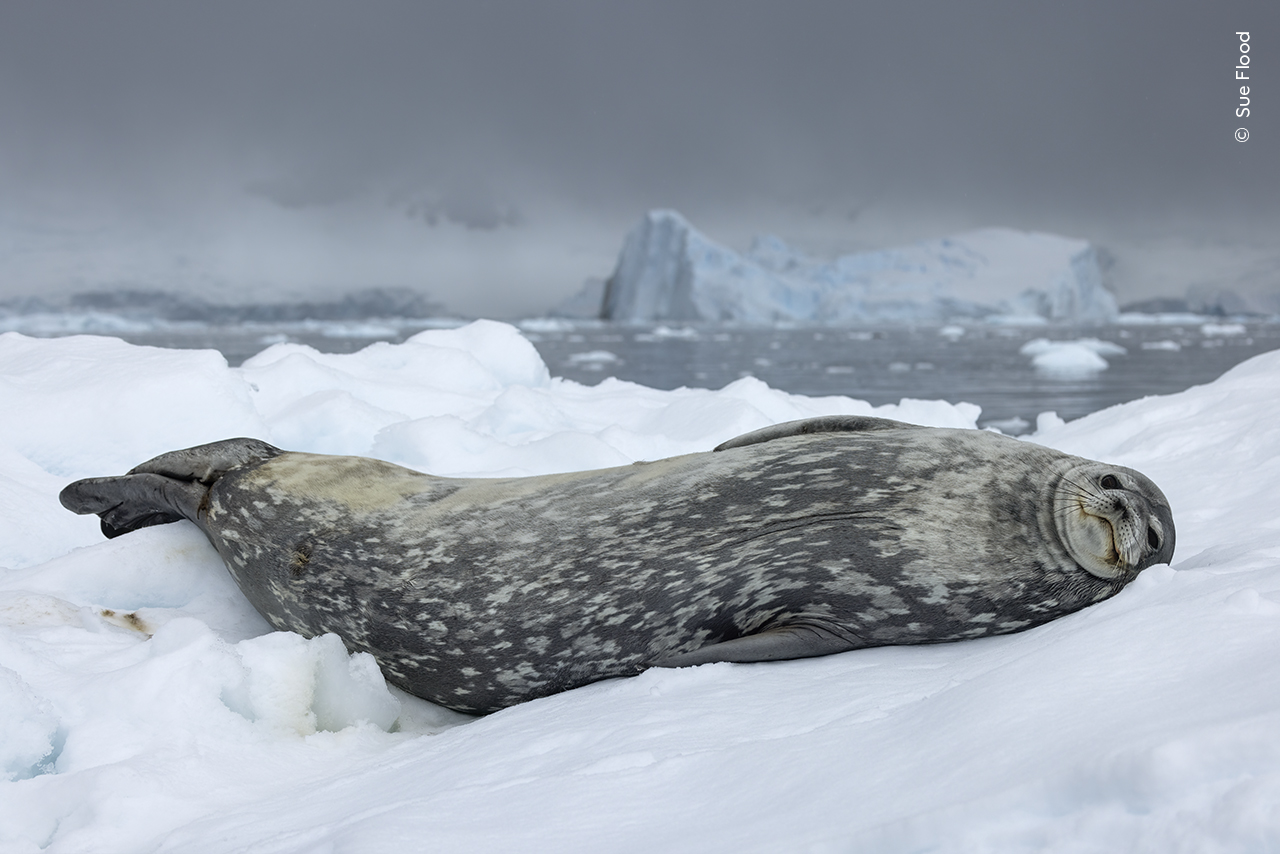
Take a look at our guides to the best camera for wildlife photography, the best camera drones, and the best trail cameras.
Why not also check out best Black Friday camera deals and the best Black Friday binocular deals.
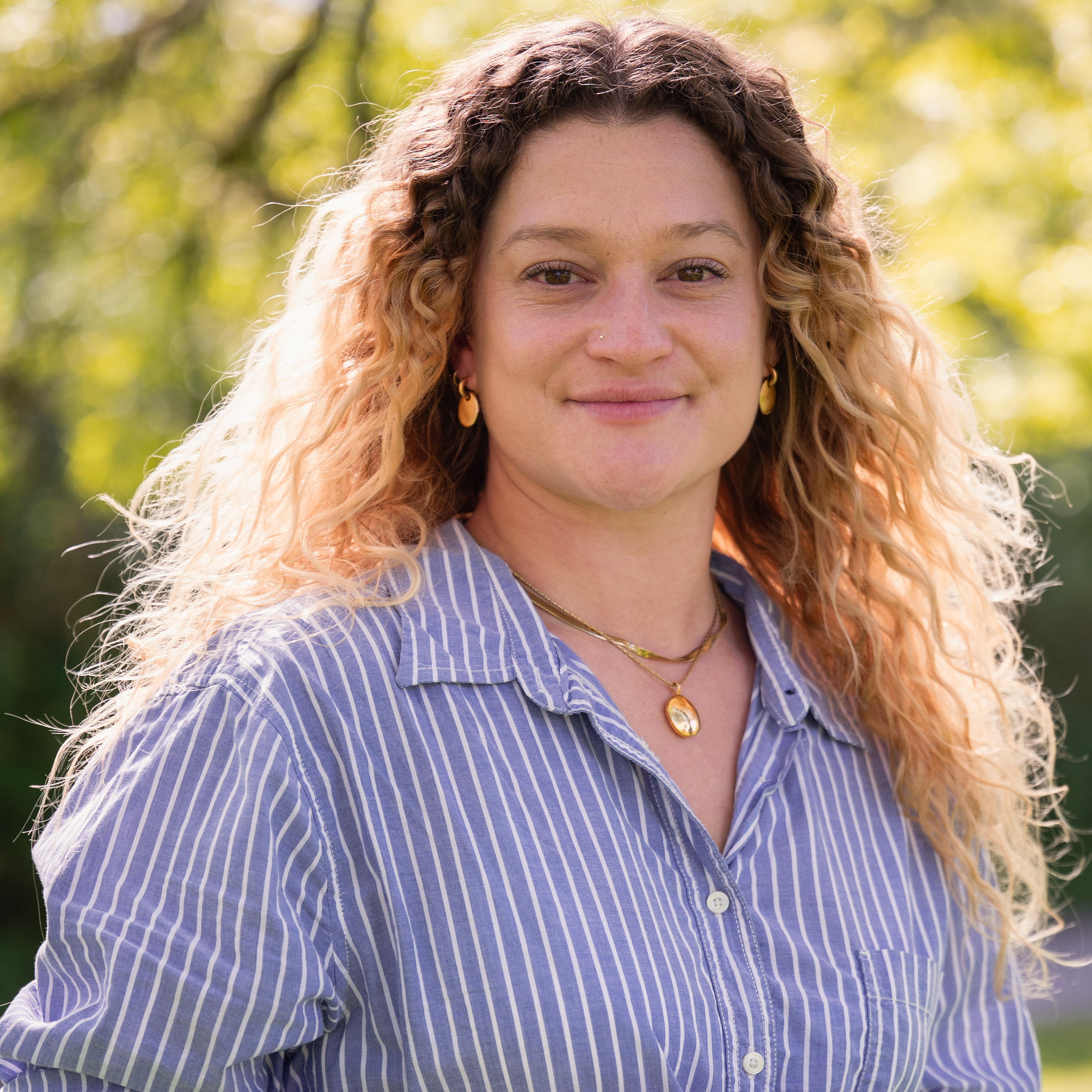
After graduating from Cardiff University with an Master's Degree in Journalism, Media and Communications Leonie developed a love of photography after taking a year out to travel around the world.
While visiting countries such as Mongolia, Kazakhstan, Bangladesh and Ukraine with her trusty Nikon, Leonie learned how to capture the beauty of these inspiring places, and her photography has accompanied her various freelance travel features.
As well as travel photography Leonie also has a passion for wildlife photography both in the UK and abroad.
